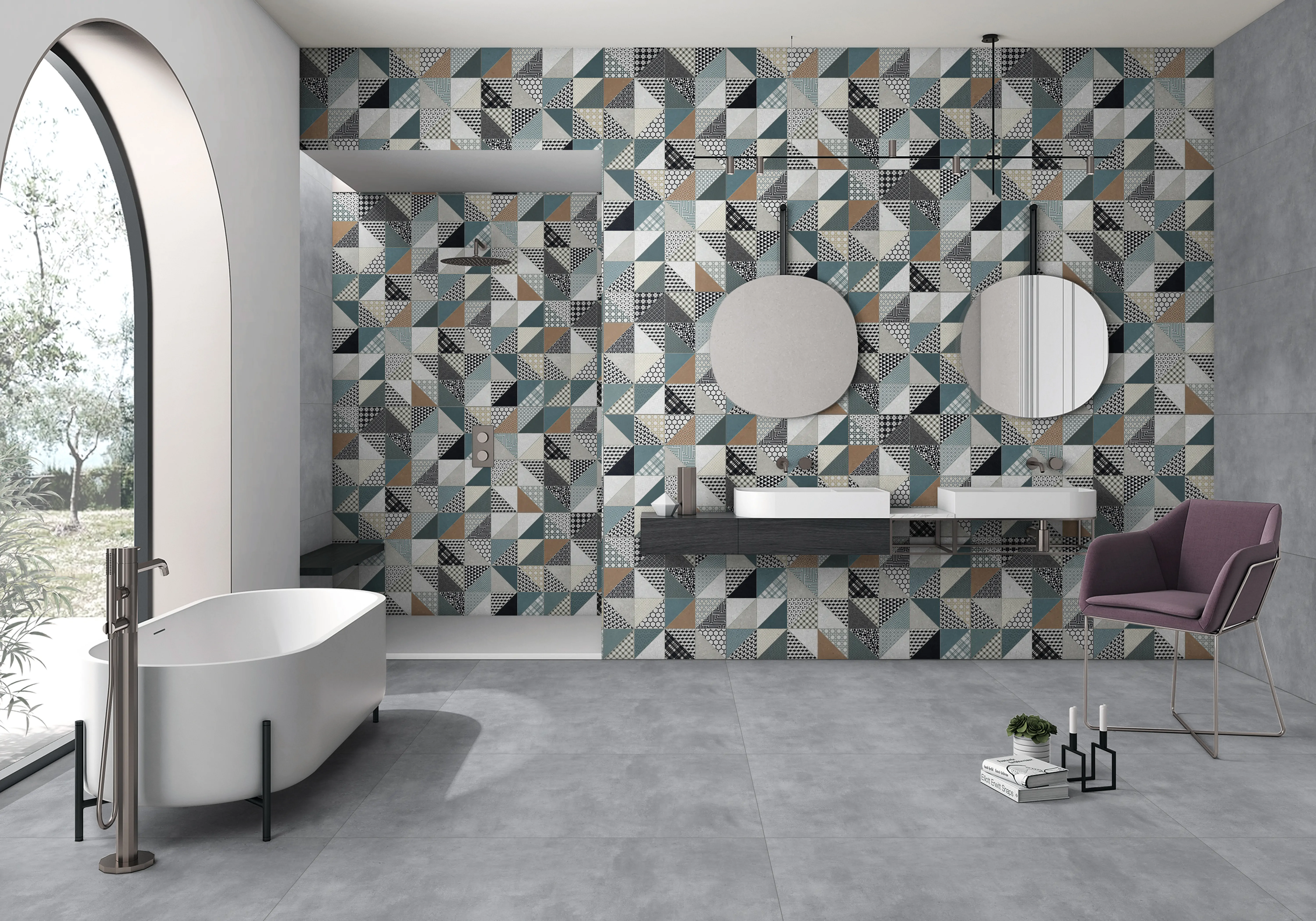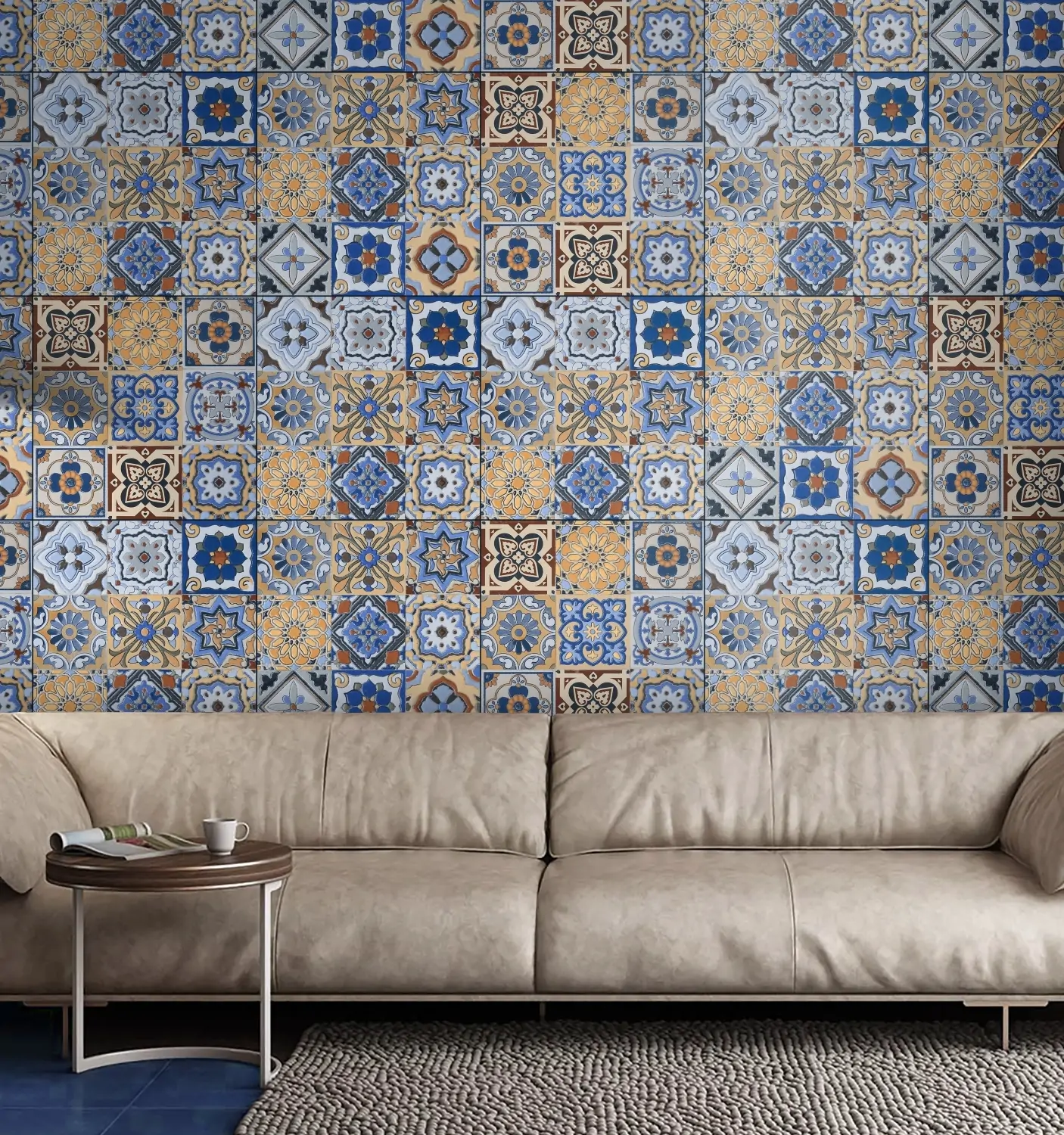
Moroccan tiles and their captivating designs have a way of bringing a bold and bright touch to your house. Since their colour palette has recently expanded beyond blues and whites to include Indian homes, they have achieved a level of ever-lasting popularity. If you’re also an admirer of the intricate looks of Moroccan-style tiles, you need to try our enormous collection of Moroccan kitchen tiles and Moroccan tile floor which are available in a huge variety of colours, patterns, and designs. Here are some notable features of our ceramic tiles (Moroccan):-
If you want to add richness and style to your home, Lavish Ceramics’s Moroccan-look tiles are a fantastic choice. Our tiles come in a range of shades, dimensions, glazes, and designs. These tiles have intricate designs and Vivid colours that create an attractive and distinctive look, giving your space its own character and style. This season, use our unique collection of Moroccan bathroom Tiles, Moroccan Kitchen tiles, and Moroccan floor tiles, to bring a little bit of Morocco into your bathrooms, kitchens, and living spaces. Our Moroccan tiles are not just aesthetically beautiful but also highly durable because of their premium built quality. Also, they fit in flawlessly in any indoor or outdoor setting because they are made to resist wear and tear.
View All Products
Moroccan
The Moorish art form of zellige, sometimes written as zellij and zellige, is prominently displayed in Moroccan architecture. The geometric tiles representing the zellij pattern are called Moroccan-style tiles.
Original Moroccan tiles can get stained easily. Spills can severely discolour the tiles if one is not careful near them. Furthermore, if they are not periodically maintained, they begin to develop a yellowish taint. However, Moroccan-look tiles are stain and scratch resistant.
The thickness of an average Moroccan tile is between 5 to 10mm.
A Moorish art form called zellij is prominently used in Moroccan tiles. These geometric tiles are used to construct the eye-catching tilework, which is then put in a plaster base to produce amazingly multi-faceted patterns.
Use a warm vinegar and water solution for routine cleaning, then scrub gently with a soft cloth. For dust and dirt, use a vacuum cleaner or regular mop.
A highly special clay from the Fez region is used to make traditional Moroccan tiles. This clay is gathered, worked with water, formed by hand, and allowed to naturally dry in the sun before being placed in a rectangular or square mould. The clay is manually flattened to remove any remaining air bubbles.
Yes. Moroccan tiles are best suited for bathrooms, kitchens, and a variety of other spaces inside or outside your home because they do not hold water and are resistant to moisture. Also, Moroccan tiles made from special germ-killing technology can prevent the growth of bacteria up to 99%.
If you are considering real Moroccan tiles, then it may be tough to clean them. Moroccan tiles are not as simple to clean as other types of tiles since they are handcrafted and have irregular shapes, projecting edges, and sharp corners. But Moroccan-look tiles require minimal maintenance and can be cleaned with any cleaning agent.
Yes. Moroccan-look tiles from Lavish are highly durable. They are resistant to scratches, stains, moisture, and heat. Plus, they resist gradual wear and tear, thus, are suitable for both indoor and outdoor settings.
The original Moroccan tiles are really expensive, especially, Moroccan zellige handcrafted tiles. When compared to ceramic subway tiles, which may only cost around INR 25 to INR 35 per square foot. Zellige tiles can cost up to INR 3000 per square foot. However, if original Moroccan tiles are expensive for you, you can buy Moroccan look tiles from Lavish, which are more long-lasting and easy to maintain.


